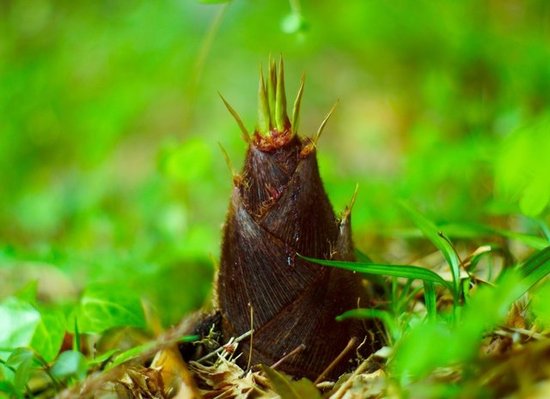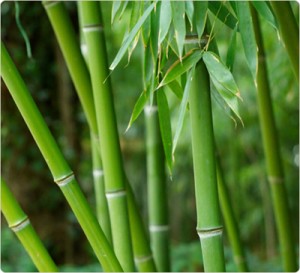Surprise
Surprise

BAMBOO.
THE Chandler children had been asked to describe different varieties of grass, each selecting that which seemed most valuable. Last of all, Hubert was called upon, when he said that bamboo was of more importance than any other.
"Bamboo is a tree," responded his brother.
"It is a grass too, one of the tree-grasses; and, in countries where it flourishes, what cannot be done with it can hardly be done at all."
"Dresses can't be made of it, can they?"
"I don't know as they 'can; but rain-cloaks are made of it, houses, and all kinds of furniture. It is used for almost everything. The young shoots are boiled and eaten, or preserved in sugar. I can't tell you much more about it; for I haven't had time to study it up. I didn't know until yesterday that it was a grass. Botanists have such a way of classing things together that you wouldn't think of, it takes a good while to find out where they belong."
Comparing the bamboo-tree with the grass growing in our fields and by our waysides, they seem to have no common characteristics; yet both' are nourished from the pith, and both start from the ground with nearly the same diameter they have at maturity.
The bamboo grows to the height of forty or fifty feet, and sometimes even higher. It has hollow, jointed stems, varying in diameter from one to eight inches, and in the distance between the joints from four inches to five feet. It may well be called the national plant of China, where the uses to which, it is applied by the natives are almost innumerable. The steins are coated with silex, making the surface so smooth and hard that carvings produced from them are more elegant than those of ivory. The plant also sometimes secretes silex between the joints in lumps, when it is called tabasheer.
The natural color of the stems is yellow; but the Chinese know how to change this color, and black bamboos are cultivated like any other rare plant. The Chinese emperor is said to have an officer whose whole duty is to attend to the bamboos of the imperial garden.
It grows very generally in Asia and in the West Indies. In the islands of the Indian Ocean it enters largely into the industrial arts of all races.
In Sumatra, small polished joints of bamboo are used instead of paper, the writing beginning at the top, and descending spirally to the bottom.
This strange plant requires thirty years or more to reach the blossoming period, when it produces an immense quantity of seed, and then dies. Sometimes all the mature bamboos of a district flower at once, thus leaving only the root-stocks to throw up new shoots.
In 1812 a famine was averted in one of the provinces of India by the general blossoming of this grass. In 1864 the bamboo flowered in the Soopa jungles, where fifty thousand people camped for weeks, gathering the seeds, which supplied them with food.
The bamboo is ready for cutting in four or five years after a plantation is set, and as it is hardest in winter, is usually cut at that season. In Burmah it is so much used in the construction of houses that some large cities are composed almost entirely of bamboo. For such houses no nails are needed,' as they are simply lashed together, and can be taken down and removed, like tents.
Was not Hubert right in considering this the most valuable of all grasses?
Mary D, Chellis, in Well-Spring.

